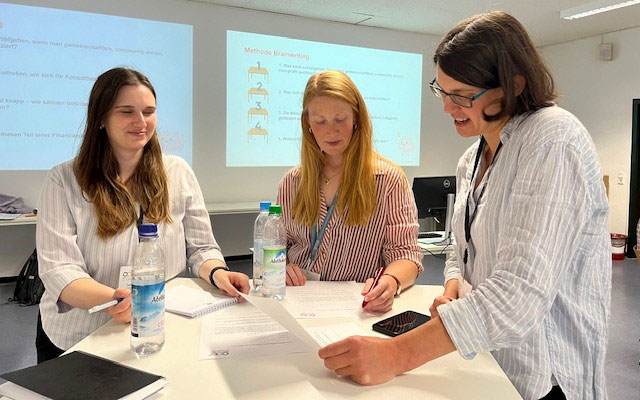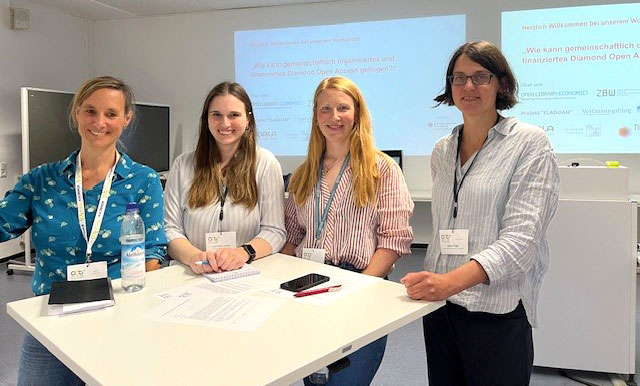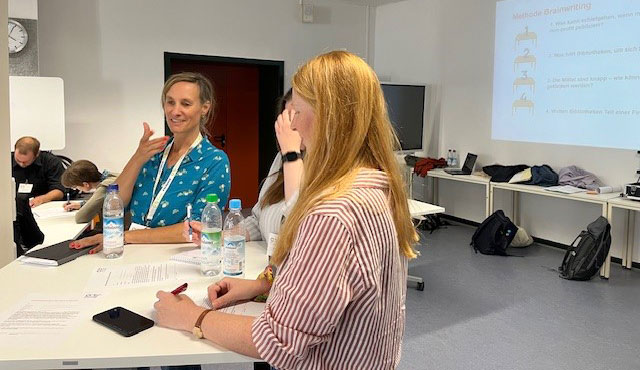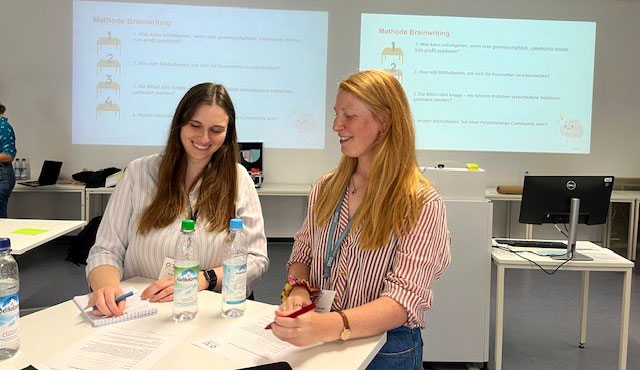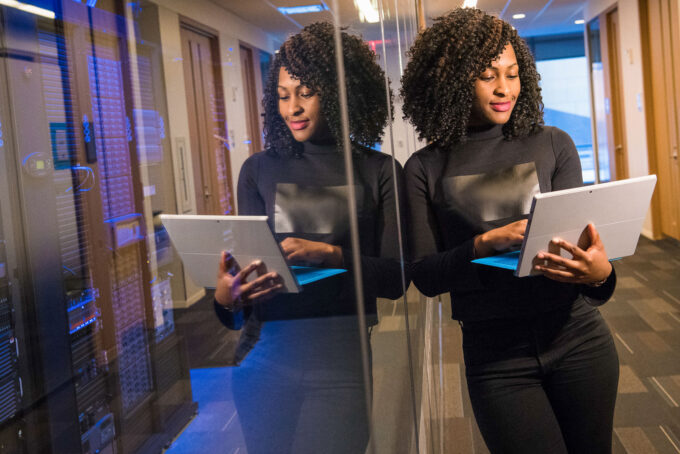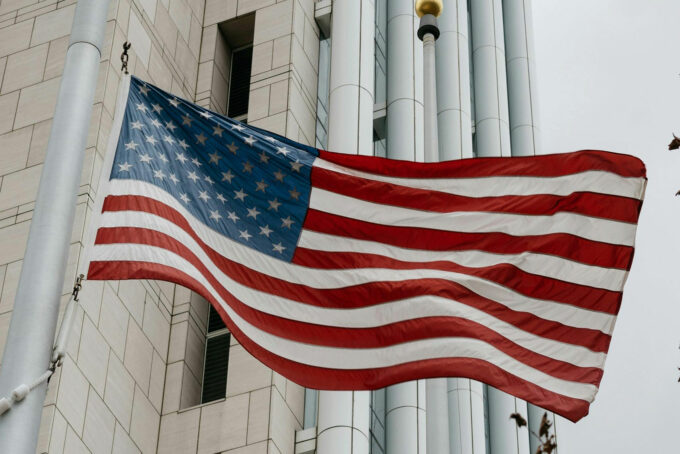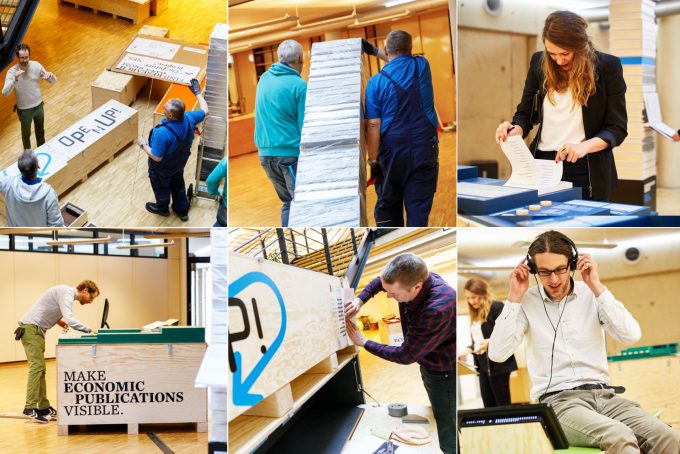
Organising and Financing Diamond Open Access: How can this be achieved in collaboration with others?
What can go wrong and what makes it easier for libraries to participate in collaborative funding models for Diamond Open Access? We discussed these and other questions and developed solutions at a workshop at the Open Access Days 2024 using the brainwriting method.
by Dr. Martina Benz, Dr. Juliane Finger, Lena Marie Henkes, Karin Silvia Stork and Dr. Marcel Wrzesinski
At the Open Access Days 2024 (German language) in Cologne on 11 September 2024, we held a workshop dedicated to the following question: How can collaboratively organised and funded Diamond Open Access succeed? This question formed the lowest common denominator for three ongoing projects funded by the Federal Ministry of Education and Research (BMBF) that have been in close contact with each other since the beginning of their funding and that jointly organised the workshop: KOALA-AV (KIM, University of Konstanz / TIB), OLEKonsort (ZBW – Leibniz Information Centre for Economics) and ELADOAH (Alexander von Humboldt Institute for Internet and Society).
Diamond Open Access – against commerce?
Diamond Open Access, as part of the Open Access colour theory, focuses on free publications for all sides and fair, scholar-led governance. This requires a joint effort by all those involved in the publication system as well as new models of financing and administration.
Water level report for the OAT 2024
On the one hand, the workshop intended to provide information on key project results; on the other hand, we sought a close dialogue with the community of Open Access experts. After three short lightning talks on the topic of Diamond Open Access, the participants themselves became active: in small groups, ideas were collected and solutions developed using the brainwriting method.
Results
The brainwriting method is a creative and idea-finding method. Unlike brainstorming, it takes place in writing rather than verbally. Participants are encouraged to write down their ideas on paper without being directly influenced by the ideas of others. This enables a structured, efficient and collaborative collection of ideas, as the participants work simultaneously and independently of each other; at the same time, they build on the ideas of the previous person by passing around the sheets of paper with their ideas.
Clearly defined questions are crucial for productive brainstorming. Based on the interim results of the three BMBF projects, the participants were asked to work on four topics: (1) What are the obstacles to collaborative, science-led publishing? (2) How can consortium participation be made easier for libraries? (3) How can a diverse number of initiatives and projects be supported despite limited resources? (4) Do libraries want to get involved in a funding community?
Challenges for Diamond OA
The participants at Table 1 discussed the question “What can go wrong when you publish collaboratively, community-driven, non-profit?”. They discussed the biggest challenges in collaboratively organised Open Access publication models. Sustainability was identified as a central problem here – both financially, in terms of personnel and legally. One major obstacle is the “voluntary” nature of funding. When budgets are cut, Diamond Open Access programmes are often the first to be affected. The lack of personnel sustainability, caused by insufficient funding for editorial teams or the reality of voluntary work, was also critically discussed. It remained unclear whether collaborative models are better able to respond to staff shortages due to their flexibility. The participants also considered how knowledge and infrastructures could be shared. At the same time, it was emphasised that excessive standardisation (“one size fits all”) should be avoided in order to preserve diversity – that is to say the variety of different financing and organisational models.
The participants agreed that it is necessary to rethink in order to achieve a long-term, binding commitment to collaborative and fair Open Access. They discussed a stronger role for the learned societies and emphasised the importance of recognising the value of editorial offices and making existing collaborative funding models transparent. Political decisions would be necessary in order to redistribute or reallocate financial resources.
Decisions for consortia
Table 2 focussed on the question of what helps libraries to decide in favour of co-financing consortial Open Access offerings. Four thematic focal points or decision criteria emerged: Firstly, there must be a subject-specific and/or strategic need for such co-financing at the respective institution. However, strategic considerations, such as the general support of Diamond Open Access models, also play a role. Secondly, financial benefit is required for libraries to decide in favour of co-financing. If participation in the consortium appears to be cost-neutral or even cheaper than the conventional options (APCs, subscriptions), the consortium could be favoured. Thirdly, quality standards should become clear. Fourthly, flexibility in the composition of journal portfolios plays a role.
Financial decisions and paths
At Table 3, the participants developed and discussed strategies that can be used to promote Diamond Open Access initiatives despite limited financial resources. The favourite proposal was to create fixed budgets that are reserved in the library budget for financing Diamond Open Access. The funds released as a result of the Open Access transformation should be channelled into a Diamond Open Access fund. In principle, the participants argued in favour of libraries critically examining which costs can be cut in order to provide funds for Diamond Open Access. The funding of Diamond Open Access should follow defined criteria, but these should not be defined too narrowly in order to leave room for innovation.
In addition, the possibility of approaching stakeholders for the financing of Diamond Open Access, who have so far hardly been included in the financing of Open Access, was discussed. For example, private companies also benefit from Open Access, but have not yet participated in the financing.
Außerdem wurde die Möglichkeit diskutiert, für die Finanzierung von Diamond Open Access auf Stakeholder zuzugehen, die bislang kaum in die Finanzierung von Open Access mit einbezogen werden konnten. So profitieren auch Unternehmen von Open Access, beteiligen sich bislang aber nicht an der Finanzierung.
Roles of libraries
Do libraries want to be part of a funding community? This question was at the centre of the discussion at Table 4 of our workshop. The question was quite difficult for the participants to answer. The question was spontaneously reformulated as “What needs to happen for libraries to want to be part of a community?” The answer was controversially discussed, but in the end everyone agreed on two things: Firstly, a community of practice is particularly interesting for libraries when it comes to Open Access funding, for example a platform to exchange views on the practical questions of “How do we do this with funding for Diamond OA?”. Secondly, on the research side, community cohesion exists primarily within disciplines. The participants identified learned societies as important entities that could become more involved in promoting Diamond Open Access. The disciplinary connections are more important for researchers than, for example, the regional connection in initiatives from different German states on Open Access. Participants concluded that scientific libraries and scientists could enter a dialogue on Diamond Open Access funding, which could be helpful for both sides. This would also strengthen the visibility of academic libraries as facilitators.
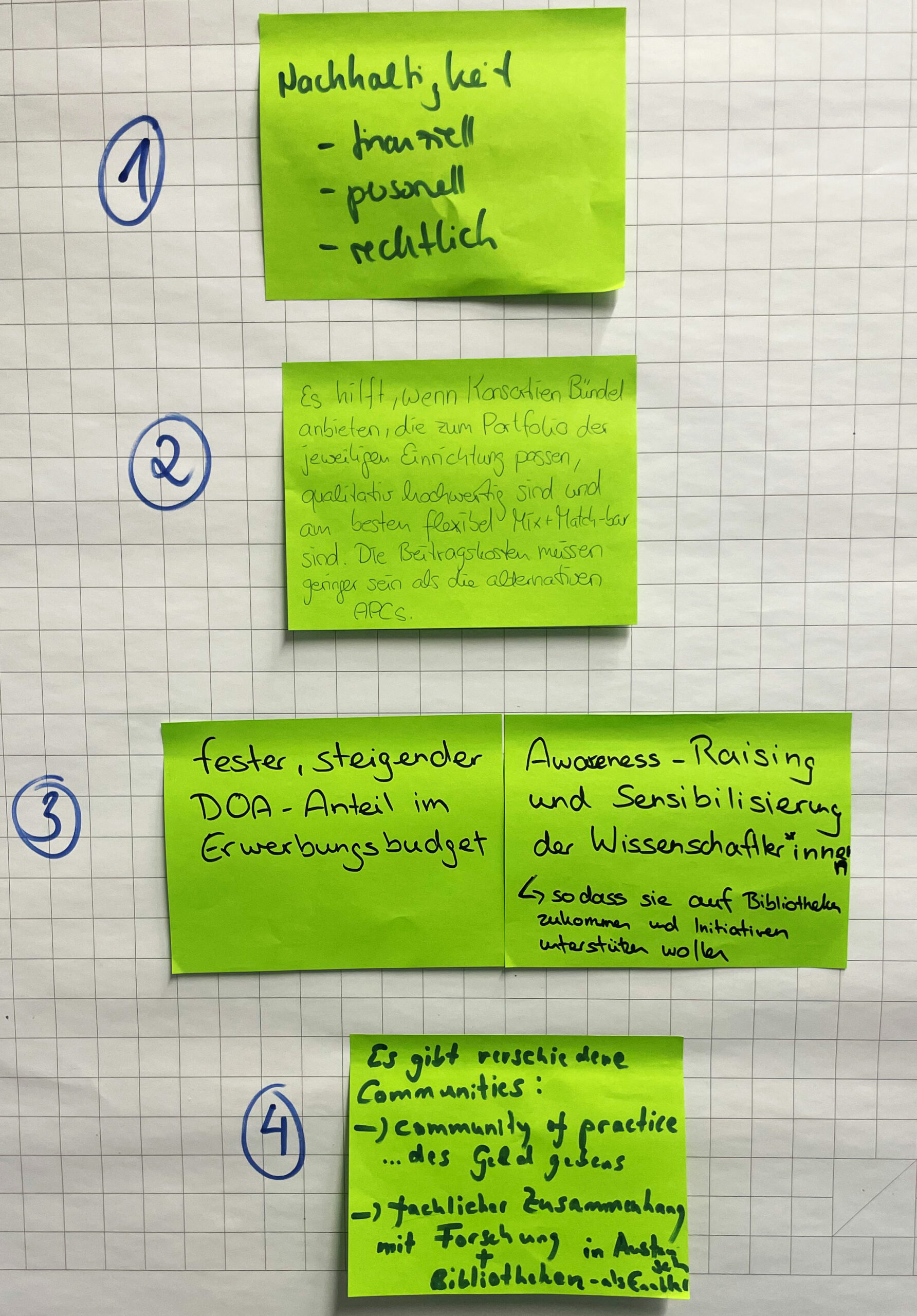
Fotos von Juliane Finger und Karin Stork
What happens next?
The workshop brought about many good ideas for solutions. It is striking that, despite different key questions, certain core topics were discussed in all four groups: the central role of learned societies, the importance of (binding!) decisions in science policy and the question of the distribution of funds.
Overall, the workshop was a rewarding experience for everyone involved. The workshop provided a valuable platform for a somewhat different kind of exchange in the Open Access community. We from the organisation team take away many helpful comments and ideas for our projects so that we can continue to tackle our central problem in the coming years: How can fair Open Access succeed?
We would like to thank the workshop participants for their input and are already looking forward to the next round of brainwriting – perhaps at the next Open Access Days?
Dr Martina Benz is a consultant for Open Access at the KIM of the University of Konstanz and heads the open-access.network 2 project.
ORCID: https://orcid.org/0000-0001-6018-3724
Dr Juliane Finger is an Open Access consultant at the ZBW – Leibniz Information Centre for Economics. She is product manager of Open Library Economics and is leading a project of the Federal Ministry of Education and Research (BMBF) to set up a funding consortium for Diamond Open Access.
ORCID-ID: https://orcid.org/0000-0001-6754-6807
Lena Marie Henkes is a research associate at the Alexander von Humboldt Institute for Internet and Society (HIIG). She coordinates the BMBF project “Acquisition Logic as a Diamond Open Access Obstacle (ELADOAH)” and has a background in political science as well as communication and media studies.
ORCID-ID: https://orcid.org/0009-0009-8351-9150
Karin Silvia Stork works in the BMBF-funded projects KOALA-AV and open-access.network and is a member of the Open Science team at the Communication, Information and Media Centre (KIM) at the University of Konstanz.
ORCID-ID: https://orcid.org/0009-0009-1098-5337
Dr Marcel Wrzesinski is a research associate at the Alexander von Humboldt Institute for Internet and Society (HIIG) and the Institute for Library and Information Science at the Humboldt University of Berlin. His research focusses on the governance and infrastructures of scholarly communication and distribution.
ORCID-ID: https://orcid.org/0000-0002-2343-7905
View Comments
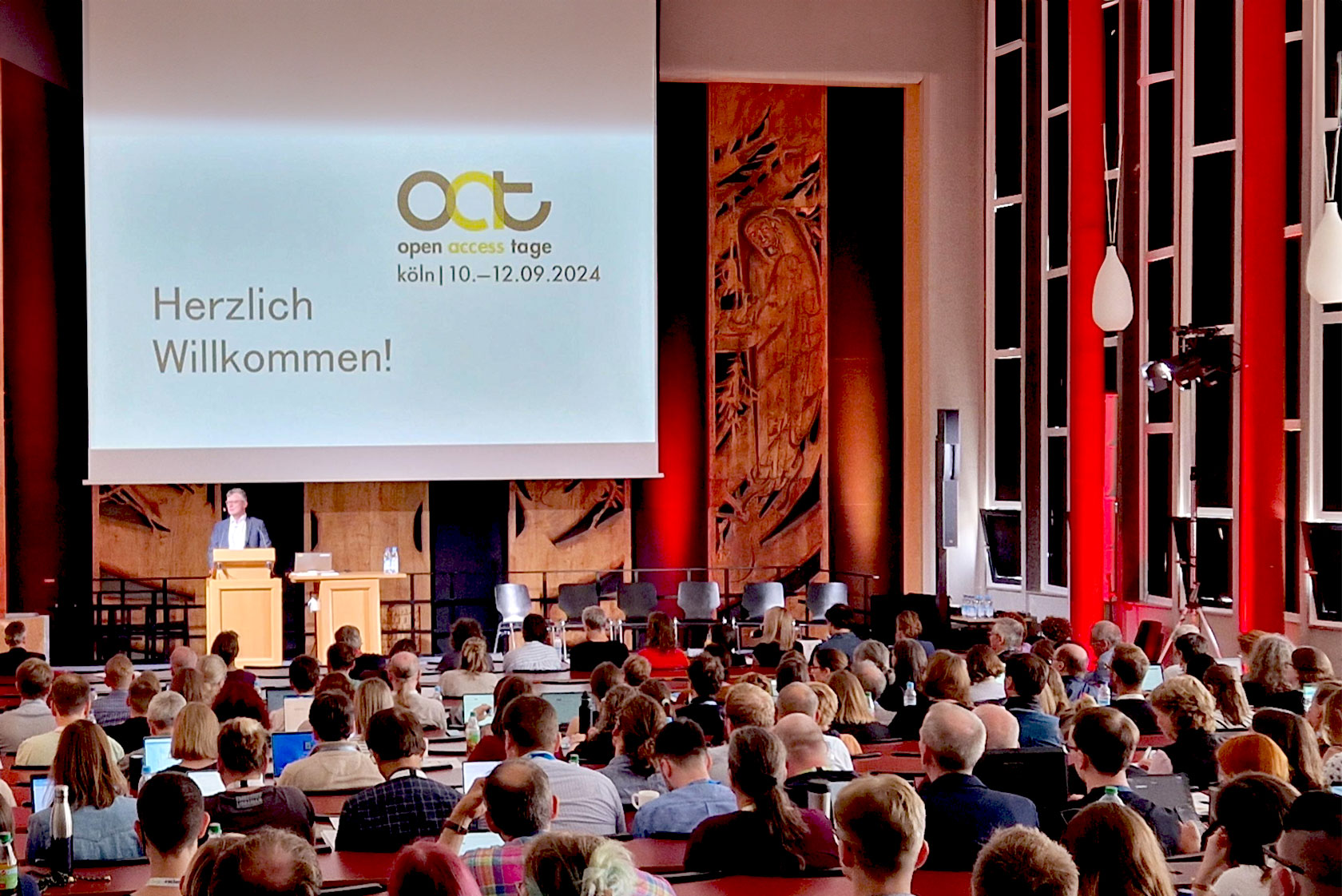
Open Access Days 2024: DEAL, Diamond and Beyond
How the Open Access transformation can be depicted as a wave movement, what a new...

